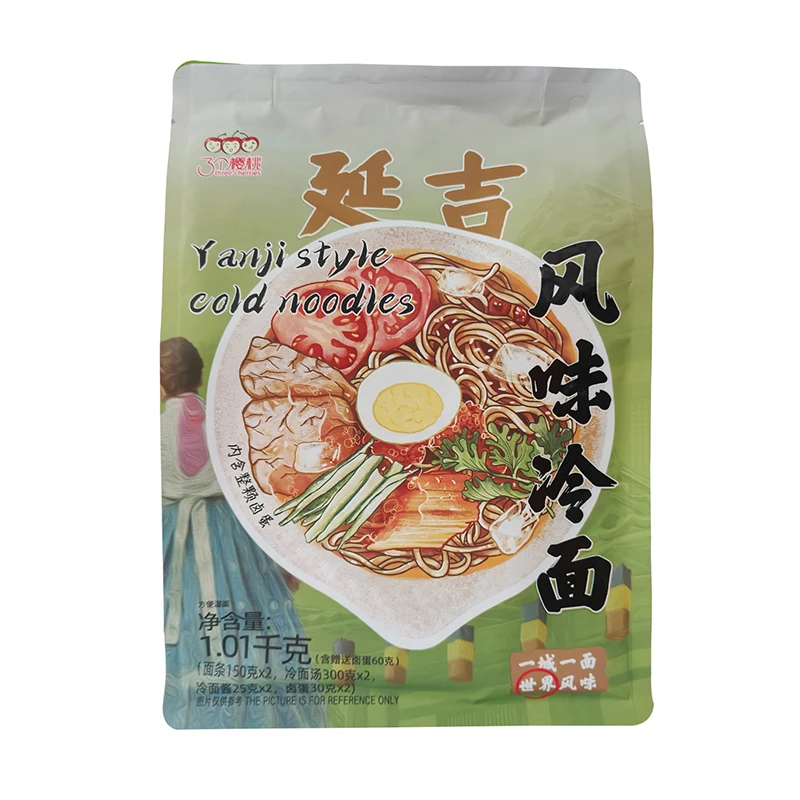What Ingredients Are Used to Make Yam Noodles and How Are They Prepared
What Are Yam Noodles Made Of?
Yam noodles, a popular delicacy in various Asian cuisines, have garnered attention for their unique texture and nutritional benefits. These noodles are primarily made from the starch extracted from yam, a tuber that is widely grown in tropical and subtropical regions. However, to fully appreciate yam noodles, it’s essential to delve into their composition, production process, culinary versatility, and health benefits.
Composition of Yam Noodles
The main ingredient in yam noodles is yam starch, which is derived from yam tubers, such as Chinese yam, purple yam, or sweet yam varieties. These tubers contain a high amount of starch, which is essential for creating the chewy and gelatinous texture typical of yam noodles. The process involves peeling and washing the yams, grating them, and then extracting the starch through a process of soaking and straining. The resulting starch is then dried and can be used to produce noodles.
In addition to yam starch, some recipes might also incorporate other ingredients to enhance flavor and texture. For instance, additional starches, such as tapioca or rice starch, may be added to create a more elastic noodle that can hold up to various cooking methods. In some cases, yam noodles could be mixed with vegetable juices or powders, giving them additional colors and nutrients.
Production Process
The production of yam noodles is a meticulous process that starts with sourcing high-quality yams. After they are harvested, yams go through several steps of processing to ensure their starch content is maximized. Once the starch is extracted, it is often shaped into strands, which can be cooked and consumed in various dishes.
what are yam noodles made of

Typically, yam noodles are available in both fresh and dried forms. Fresh yam noodles have a shorter shelf life and are often soft and pliable, making them perfect for stir-frying or soups. On the other hand, dried yam noodles need to be rehydrated before cooking; they usually provide a firmer texture once prepared. Both versions are incredibly versatile and can complement a range of dishes.
Culinary Versatility
Yam noodles can be prepared in numerous ways, showcasing their adaptability in kitchen applications. They can be used in stir-fries, soups, salads, and even desserts. In many Asian cuisines, for instance, yam noodles might be stir-fried with an assortment of vegetables, proteins like tofu or chicken, and flavorful sauces to create a hearty meal. They can also be added to broths as a gluten-free alternative to traditional wheat noodles.
Moreover, because of their neutral flavor profile, yam noodles easily absorb the essence of the ingredients they are cooked with, making them an excellent choice for any dish that benefits from a chewy, hearty texture. This adaptability means that yam noodles are not only confined to Asian-style dishes but can also be incorporated into Mediterranean, fusion, or Western recipes, accommodating a variety of tastes.
Health Benefits
Beyond their culinary appeal, yam noodles also offer several health benefits. They are naturally gluten-free, making them an attractive option for those with gluten sensitivities or celiac disease. Additionally, yam is rich in fiber, vitamins, and minerals, promoting digestive health and helping maintain balanced blood sugar levels. Yam noodles can also be lower in calories compared to traditional wheat noodles, allowing those on calorie-restricted diets to indulge without guilt.
In conclusion, yam noodles are a delightful and nutritious alternative to conventional noodles, made primarily from yam starch. Their versatile nature allows them to be incorporated into a variety of dishes, catering to different palates around the world. Whether enjoyed in a warm bowl of soup or as part of a vibrant stir-fry, yam noodles offer a unique taste experience that resonates with both health-conscious eaters and culinary explorers alike. As the culinary world continues to embrace and experiment with gluten-free and plant-based options, yam noodles are poised to secure their place on tables across the globe.
-
Is Whole Wheat Pasta Healthy?NewsMay.30,2025
-
Are Soba Noodles Good for Weight Loss?NewsMay.30,2025
-
Are Buckwheat Soba Noodles Healthy?NewsMay.30,2025
-
Are Buckwheat Soba Noodles Gluten Free?NewsMay.30,2025
-
Are Buckwheat Noodles Good for You?NewsMay.30,2025
-
A Healthy Way to Savor Soba and Spicy FlavorsNewsMay.30,2025
-
What Are Lanzhou Noodles?NewsMay.30,2025
Browse qua the following product new the we

















































































































